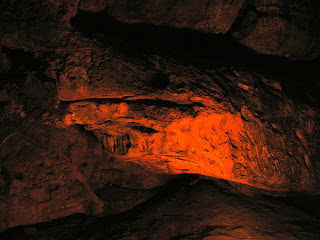At some point in every event planner's career, especially if they own a small business, there will be a broken contract. In this case, I am talking about a contract with a client. We all hope it will never happen, but it will, even if you have clauses written into the contract to prevent it. Let's look at a typical example and keep it simple.
You have contracted with your wealthy client and they have sent the requisite deposit. The event goes well and you dutifully send an invoice for the remaining amount. The days go by then the weeks and you still have not been paid, for what ever reason. What can you do?
Now I'm not lawyer, but I'll give you my version based on experience and extensive reading. There are basically two avenues you can take. The first is called Alternate Dispute Resolution or ADR. It is usually the cheapest solution and allows the parties to sit down together to come to an agreement. There is also a much better chance that the planner/client relationship can be maintained. It includes negotiation, mediation, conciliation, and arbitration in increasing order of complexity, and decreasing amount of decision-making control by the parties. Event planners and producers should seriously consider ADR as a contract clause.
Good luck, and here's hoping you never have to go to court!
You have contracted with your wealthy client and they have sent the requisite deposit. The event goes well and you dutifully send an invoice for the remaining amount. The days go by then the weeks and you still have not been paid, for what ever reason. What can you do?
Now I'm not lawyer, but I'll give you my version based on experience and extensive reading. There are basically two avenues you can take. The first is called Alternate Dispute Resolution or ADR. It is usually the cheapest solution and allows the parties to sit down together to come to an agreement. There is also a much better chance that the planner/client relationship can be maintained. It includes negotiation, mediation, conciliation, and arbitration in increasing order of complexity, and decreasing amount of decision-making control by the parties. Event planners and producers should seriously consider ADR as a contract clause.
- Negotiation - This is the simplest form of ADR and gives the disputing parties the most control over the outcome. It is the conferring of the two parties with each other, without the assistance of a neutral party, with the purpose of arriving at a settlement. Occasionally, a neutral third party may be brought in to simply keep the parties talking and to record proceedings.
- Mediation - Mediation brings in a neutral third party intervener (mediator) to facilitate the process but not to impose a solution. The parties select the Mediator and once selected, the Mediator arranges the mediation process. The Mediator makes no decisions, but acts as a facilitator only to assist the parties to understand the dispute, to provide structured discussion, and to help the parties reach a dispute settlement agreement. If the parties cannot reach a settlement agreement, they are free to pursue other options. The parties generally decide in advance how they will contribute to the cost of the mediation. Mediation is a very important form of ADR, particularly if the parties wish to preserve their relationship. It is more structured than negotiation.
- Conciliation - Conciliation also uses a neutral third party to act as a go-between and to re-establish the relationship. In conciliation, more control is vested in the conciliator, who is usually seen as an authority figure responsible for determining the best solution for the parties. The conciliator, not the parties, often develops and proposes the terms of settlement. The parties come to the conciliator seeking guidance and the parties make decisions about proposals made by the conciliator. The parties must decide in advance whether they will be bound by the conciliator's recommendations for settlement. The parties generally share equally in the cost of the conciliation.
- Arbitration - In arbitration, the opposing parties choose a neutral third party (arbitrator) or a panel of arbitrators, to listen to each disputant and to make a decision that is binding on them. Costs of the arbitration are disposed of as part of the settlement unless the parties have agreed otherwise beforehand. Arbitration removes all decision-making authority from the two parties. Because of this, there is less likelihood of the prior relationship being maintained after the process.
- Small Claims Court - In most jurisdictions, these are typically used to recover disputed amounts that are under a specified value. They are quite simple to work in and an individual company owner or event producer can easily go through the process without a lawyer, although some professional help is always wise. There are some cautions, however. First, the process can be very lengthy and can take over a year just to get to court, mainly because of the backlog of court cases. Secondly, even if one wins in court, there is no guarantee that payment will be forthcoming from the offending party, and the hardest part often comes after the court judgment in trying to collect on the judgment. This can get into the costly use of bailiffs to recover property to sell to provide the debt payment.
- Litigation - This assumes that the disputed amount is over the maximum value for small claims court, which can be different amongst jurisdictions. It is to be avoided at all costs, particularly for small businesses unless the amount at stake is very high, as it can sap a lot of energy and cash. If it happens, expert legal advice and probably very deep pockets will be required.
Good luck, and here's hoping you never have to go to court!

